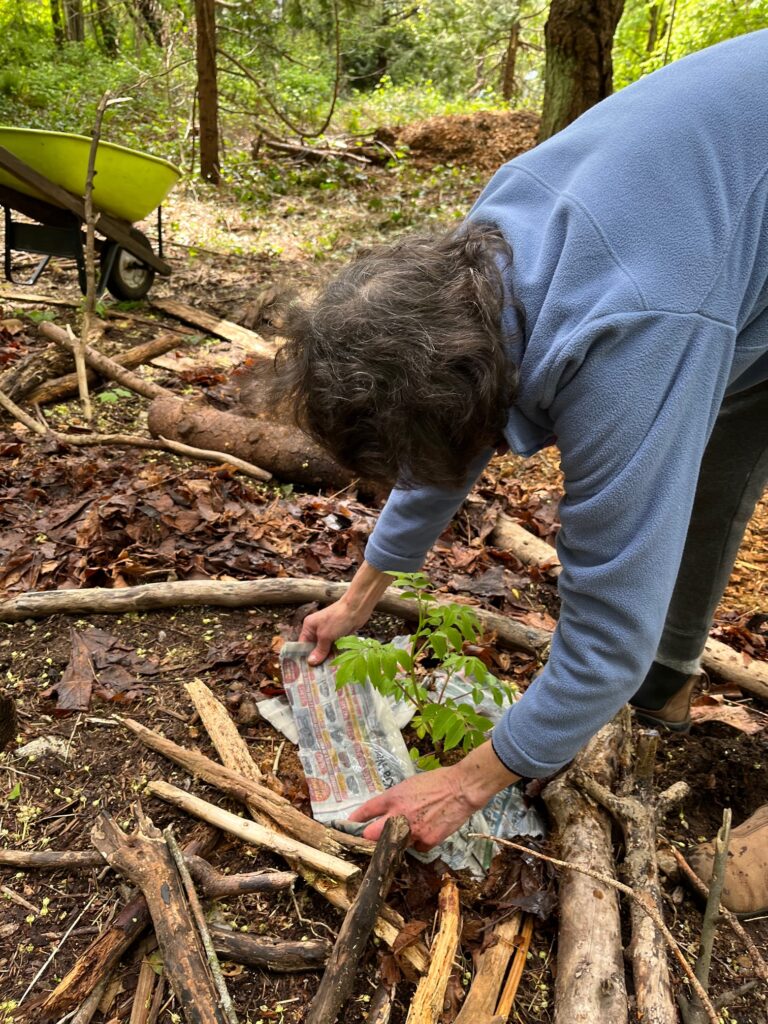I thought I would share the steps Free the Fern is taking in our restoration effort along the Red Alder Trail, specifically in the site we have come to refer to as “The Triangle” (just north of the forested playground).
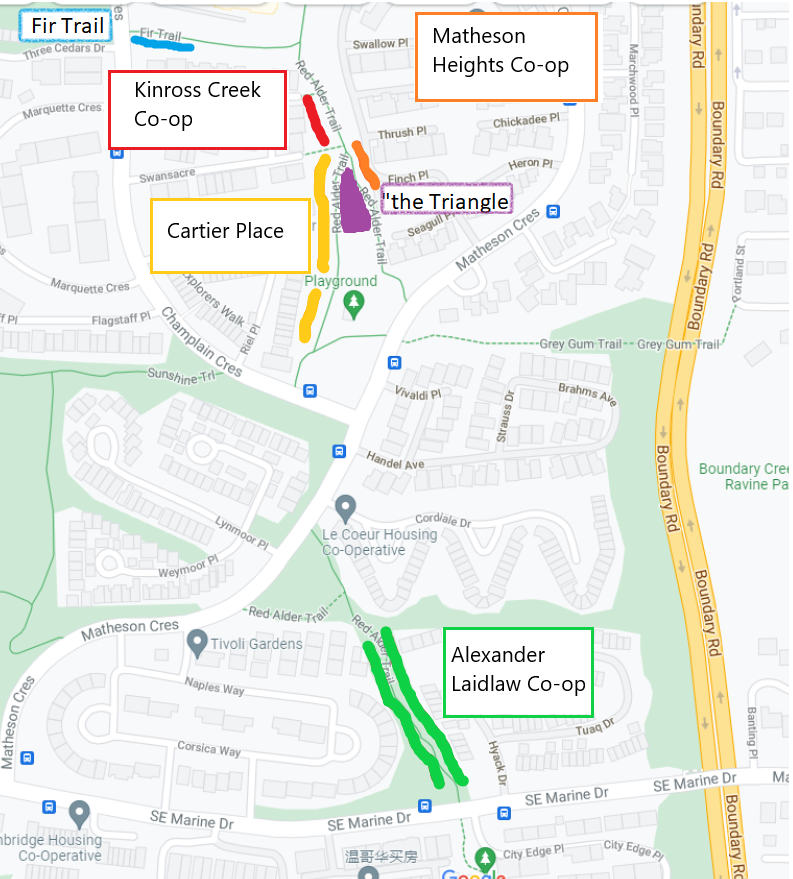
Step One: Clear Fallen Wood & Garbage
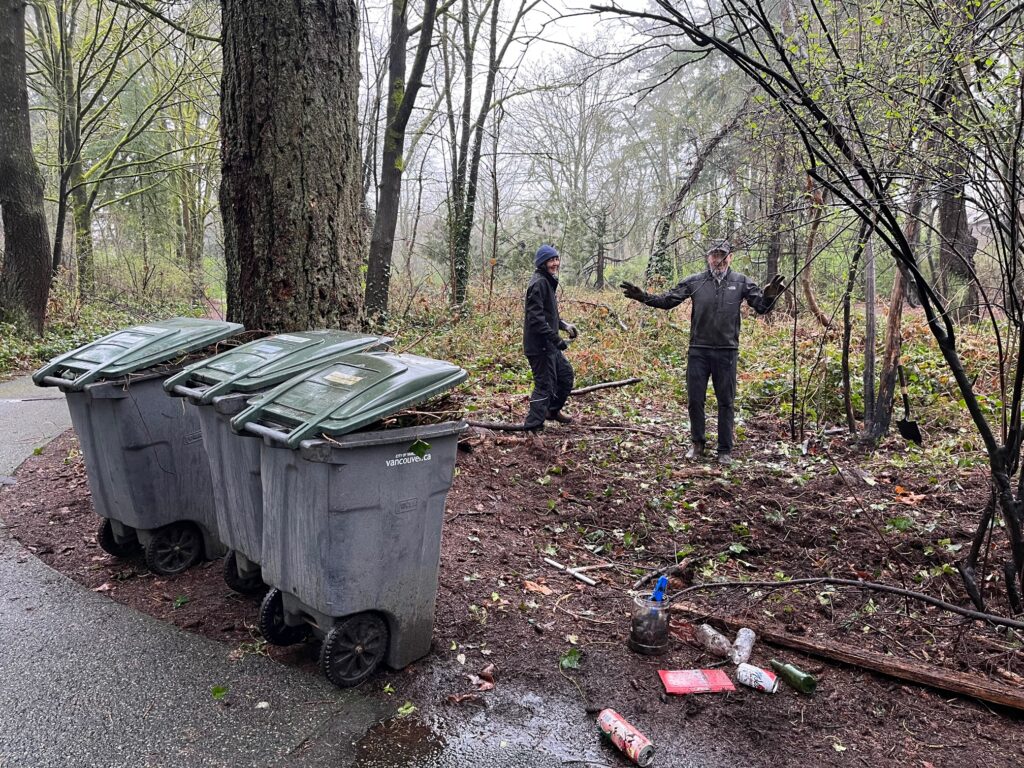
To reduce hazards of tripping and to make the area clear for removing invasives, we begin by gathering large pieces of fallen wood and piling them to the side of the stewardship area. These pieces of wood will be reintroduced to the site later. In addition, we gather any garbage for disposal or recycling.
Step Two: Remove Invasives
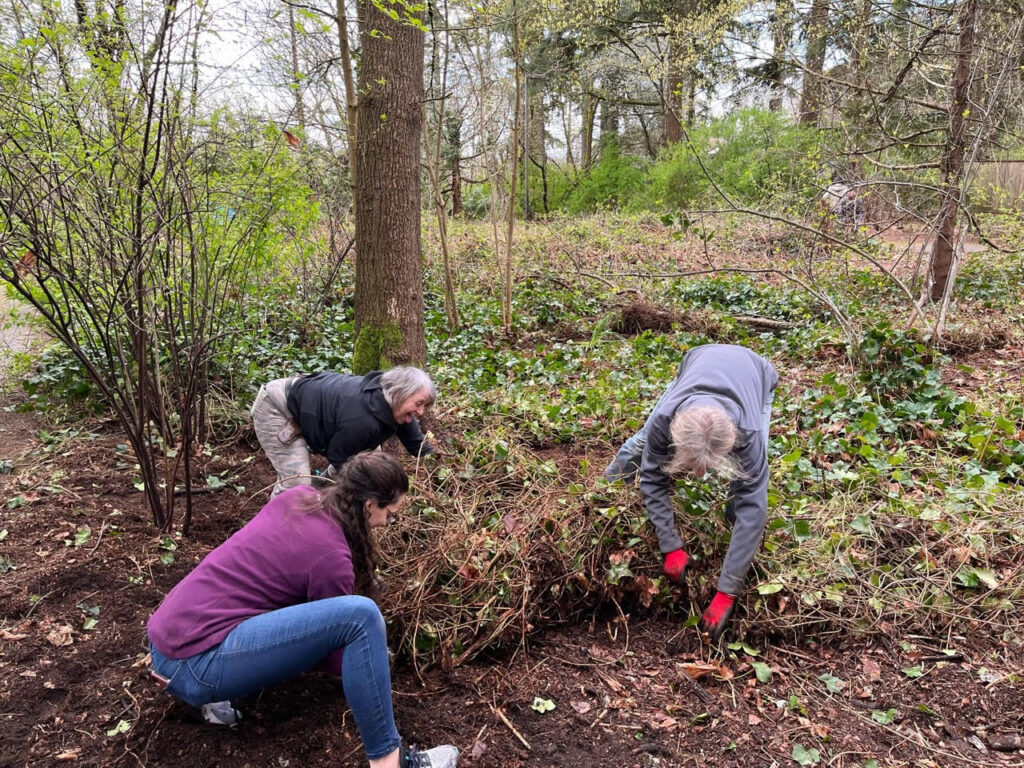
We began by trimming back Himalayan blackberry canes for disposal in green bins. We also remove English ivy from the surface by pulling, trimming or rolling, before disposing in green bins or repurposing for basket weaving.
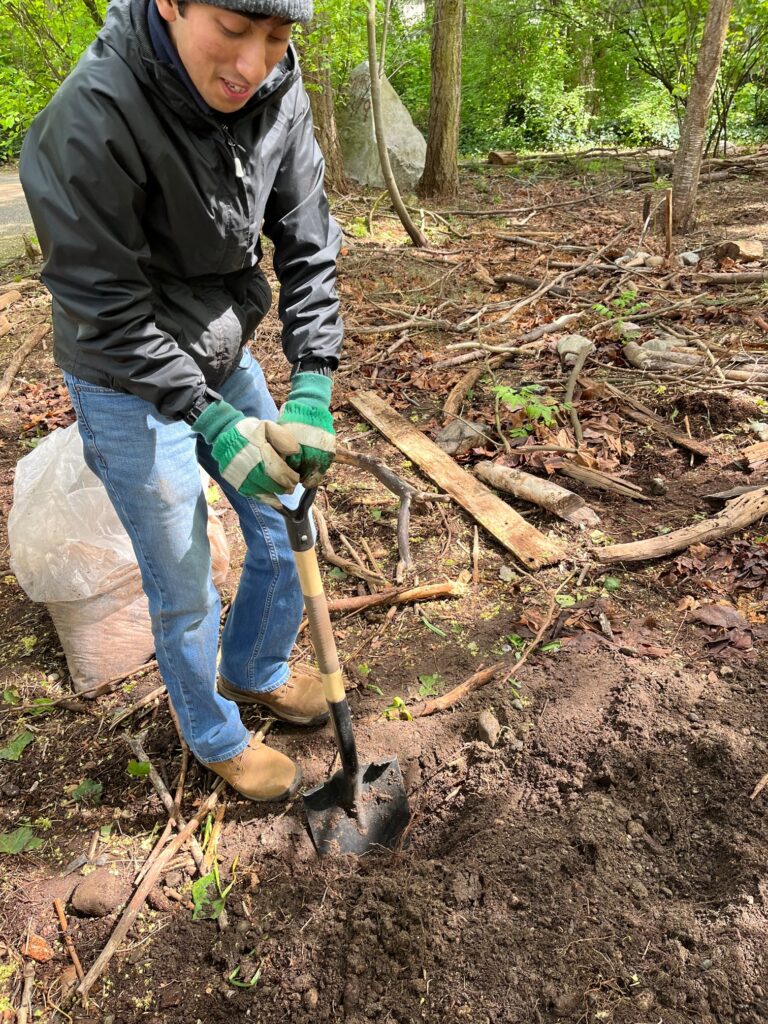
Following the removal of invasives on the surface, we also take time to dig down (about a foot deep) for invasive ivy and blackberry roots.
Step Three: Add Leaf Mulch
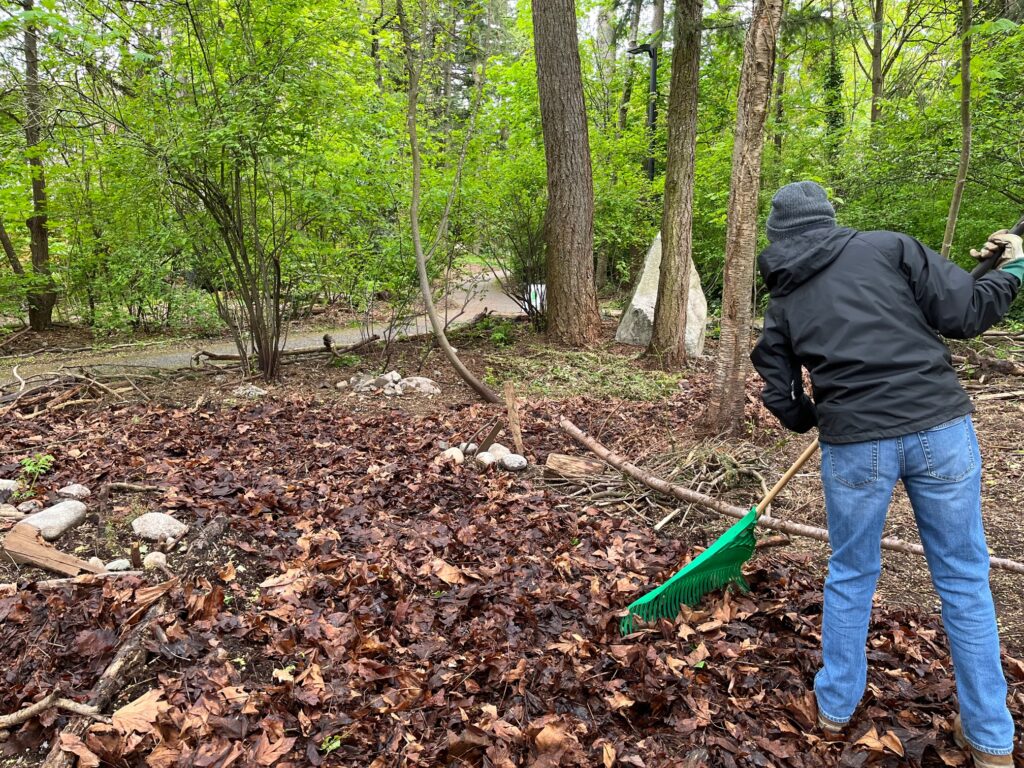
In an effort to return leaf matter to the area, we transport leaf mulch to the site via wheelbarrow or bag. We then rake the leaf mulch over the soil. The leaf mulch covers the soil in a 1-3 inch layer.
This leaf mulch will break down, providing necessary food for worms and bugs, which, in turn, provide food for the birds. The leaf mulch also helps, significantly, with retaining moisture in the soil over the dryer summer months.
Step Four: Add Woodchips/mulch
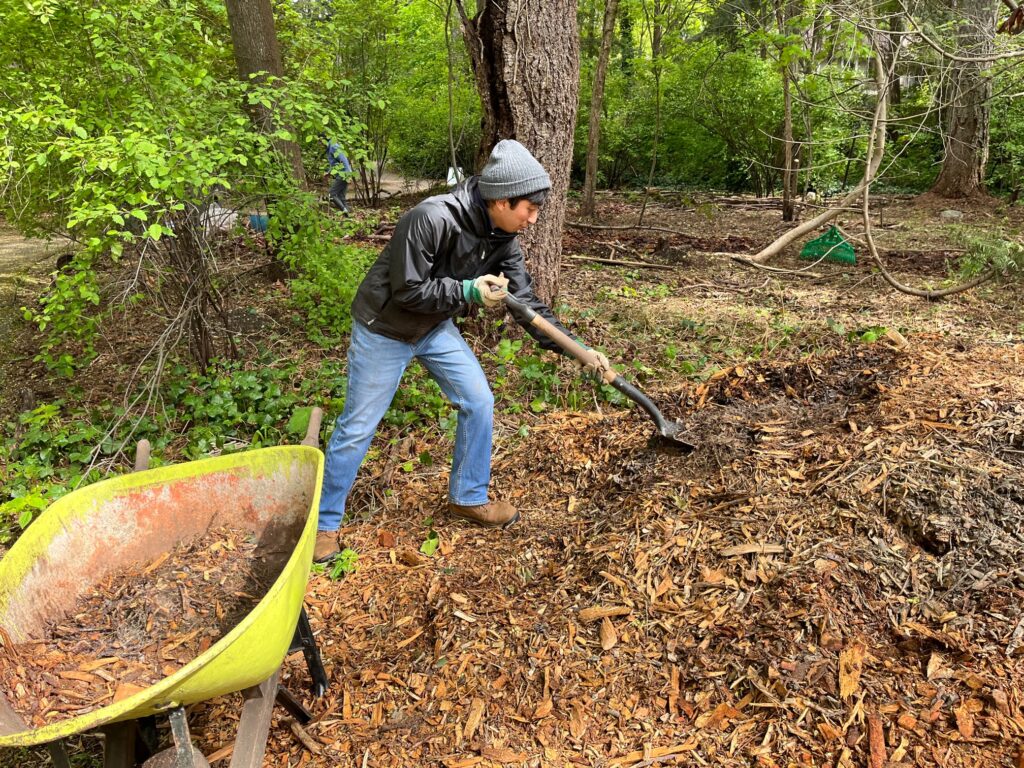
The Vancouver Parks Board was kind enough to dump a pile of wood chips in The Triangle for our forest restoration effort.
So, after adding leaf mulch to the soil, we fill a wheelbarrow full of these woodchips. We then toss/sprinkle some woodchips over the layer of leaf mulch. We put significantly less woodchips than leaf mulch (perhaps 1/3 the amount), as we prefer to have more leaf matter to feed the worms and bugs. The woodchips will help to prevent moisture loss of the soil during the summer.
Step Five: Return Fallen Wood
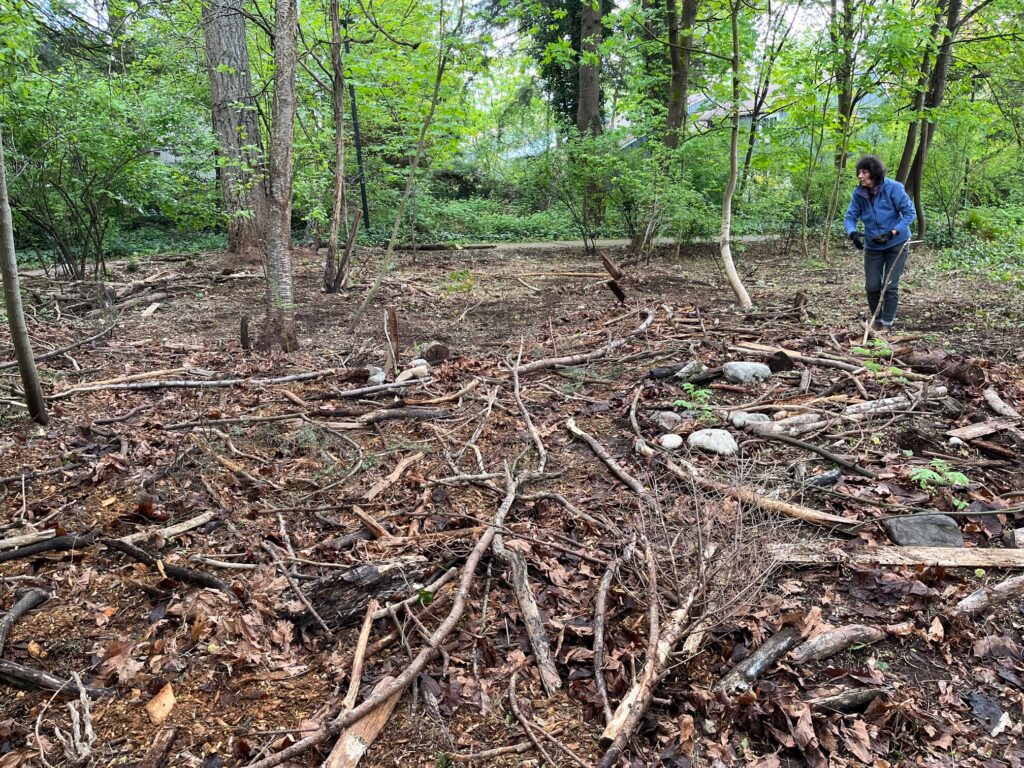
Finally, after invasives have been removed and layers of mulch added, we return the fallen wood to the site by scattering it on top of the mulch.
This wood will provide necessary food for bugs, which will also be eaten by birds. Lichen on the wood also adds nitrogen back into the soil. Eventually this wood will break down and become part of the soil. Note: Fallen wood is an important feature of old growth forests, covering approximately 25% of the forest floor.
We now leave the stewardship site until our fall planting. The leaf mulch and wood will continue to break down and the soil will remain moist and healthy. We will continue to monitor the area for invasive weed regrowth and remove any plants as they re-emerge.
Targeted Protection
In addition to the above steps to prepare the triangle for future native planting, we also are doing some targeted experimentation around our native plants. In an effort to protect some of these spring plantings from over drying during the summer, stewardship volunteer, Ann Hamm, added layers of: clean sawdust, leaf mulch, wet newspaper, and woodchips. These layers surround the plants act like a blanket, holding in moisture. She was inspired by Morag Gamble and the “No Dig” garden method. We will monitor these plants and see how they do with this method of targeted protection.
